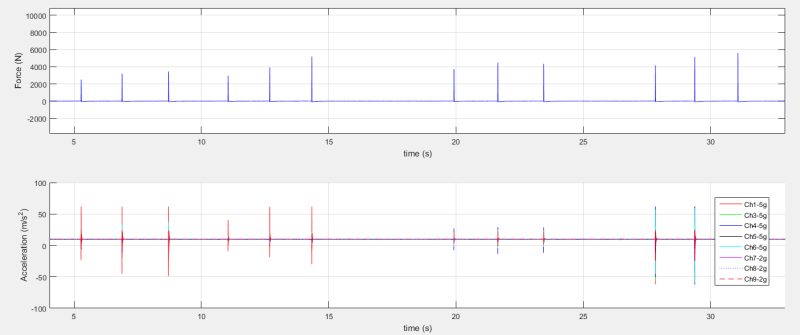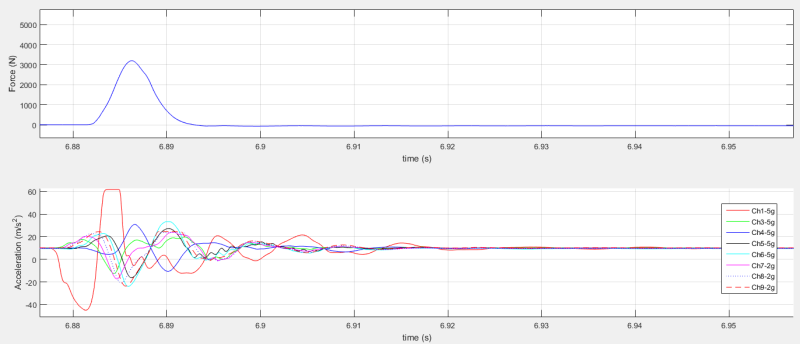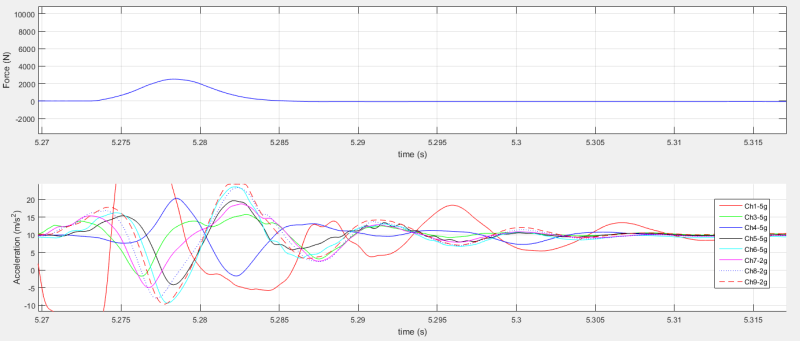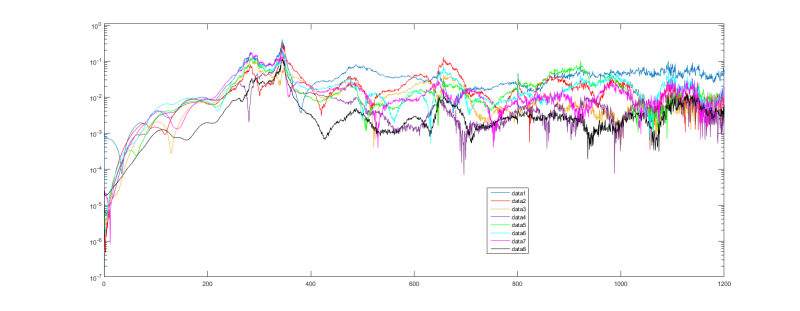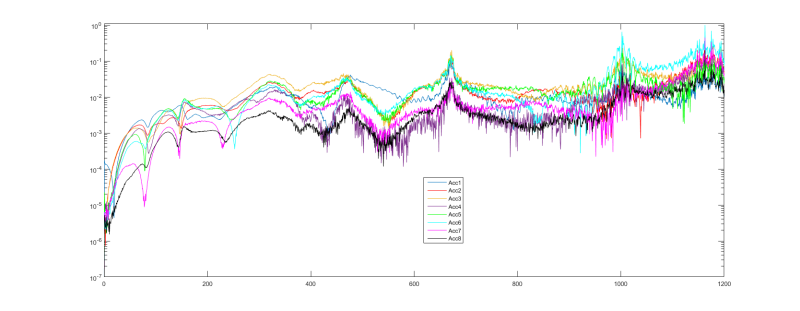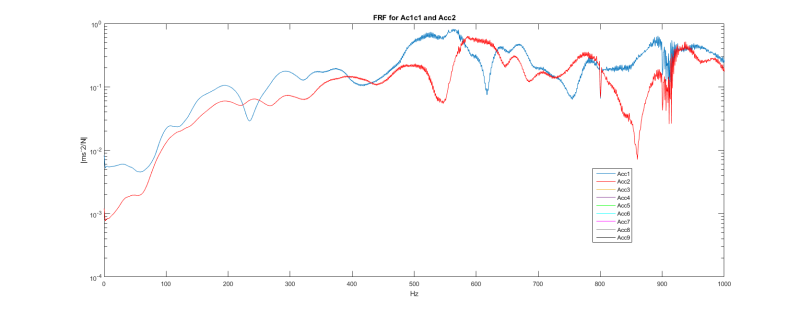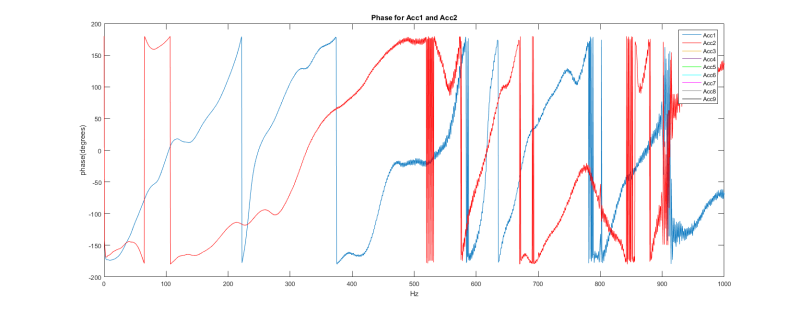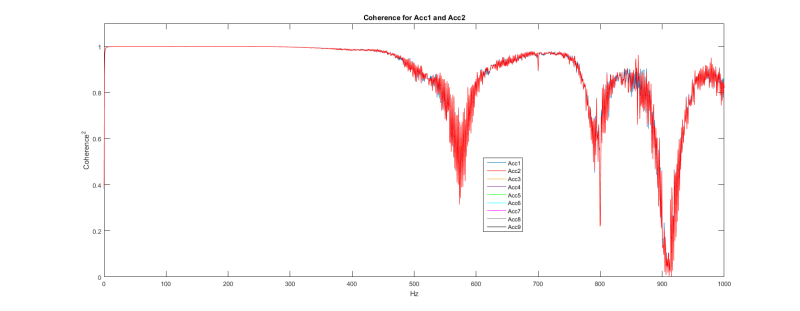Dear all,
I have acquired some data by using instrumented hammer and 8 accelerometers.
The data has been acquired on a railway track on a timber sleeper.
Now, I want to analyse the data in the frequency domain.
Usually I am interested in the lower frequency range up to 1000Hz.
When I calculated the corresponding FRFs for every accelerometer some of them are very noisy (channel 6,7, and 8). Channel 6,7 and 8 are the furthest from the impact location.
The rest of the channels (1,2,3,4,5) have more cleaner FRF curves with visible peaks.
I also tried to filter out the data, but I think I got lost in this part since I don't understand how the filtering is applied.
Basically I need few tips how to start getting more cleaner FRFs. So, my questions are following:
Many thanks in advance!
Emina B.
I have acquired some data by using instrumented hammer and 8 accelerometers.
The data has been acquired on a railway track on a timber sleeper.
Now, I want to analyse the data in the frequency domain.
Usually I am interested in the lower frequency range up to 1000Hz.
When I calculated the corresponding FRFs for every accelerometer some of them are very noisy (channel 6,7, and 8). Channel 6,7 and 8 are the furthest from the impact location.
The rest of the channels (1,2,3,4,5) have more cleaner FRF curves with visible peaks.
I also tried to filter out the data, but I think I got lost in this part since I don't understand how the filtering is applied.
Basically I need few tips how to start getting more cleaner FRFs. So, my questions are following:
1. How to decide in general which digital filter should be applied? Is there a rule for this?
2. Is it recommended to always filter out the data? Can other info from the signal be lost?
3. What is the best filter I should apply in order to get more clean FRFs for my application?Many thanks in advance!
Emina B.

